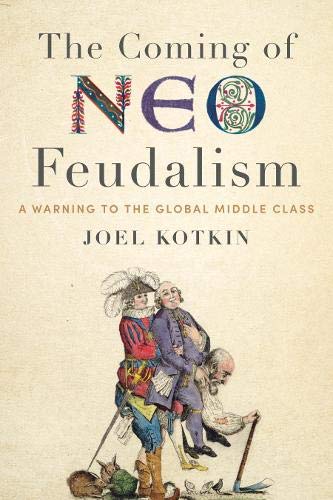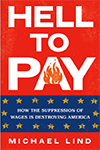Cities that believe in themselves are hard to kill. In the aftermath of Hurricane Harvey many pundits have urged Houston to abandon many of the traits that have made it a dynamic, growing metropolis, including key elements of its light-handed, pro-business regulatory regime. read more »
Hurricanes Don't Kill Cities - People Do
- Login to post comments
Spotlight on Infrastructure After Harvey
The recent tragic events in Houston and across the Gulf Coast once again demonstrated the woeful inadequacy of our infrastructure. Hopefully, some good will come of Hurricane Harvey. Hopefully, it will jump-start the long-awaited Trump initiative on infrastructure, which may be the one issue that could unite this country. read more »
- Login to post comments
Trump Must Go, But the Disruption Must Stay
The great disrupter is rapidly becoming a great disaster — for the country, his party and even his own political base. In order to save anything from his landmark 2016 victory, President Donald Trump must go — the sooner, the better. read more »
The Changing World of Aviation
Perhaps nothing more illustrates the shifts in the global economy than the geography of the largest airports. In 2000, world air passenger statistics were dominated by high income world economies. Among the 25 busiest passenger airports, 14 were in the United States, five in Europe and five in Asia and one in Canada, according to data from the Airports Council International and the Port Authority of New York and New Jersey. read more »
- Login to post comments
U.S. Cities Have A Glut Of High-Rises And Still Lack Affordable Housing
Perhaps nothing thrills mayors and urban boosters like the notion of endless towers rising above their city centers. And to be sure, new high-rise residential construction has been among the hottest areas for real estate investors, particularly those from abroad, with high-end products accounting for 8o% of all new construction.
Yet this is not an entirely high-end country, and these products, particularly the luxury high-rises in cities, largely depend on a small segment of the population that can afford such digs. read more »
Hurricane Harvey: A View from a Rugged Communitarian
Narratives are not necessarily built on facts; they’re built on stories, pictures, graphics, and videos. Ideally, we want our narratives to be aligned with the facts; but that doesn’t always happen.
Here is a synthesis of some of the predictable narratives being spun in the immediate aftermath of Hurricane Harvey from such places as The Washington Post, Slate, The Guardian, Newsweek and NPR: read more »
- Login to post comments
Elusive Population Growth in the City of Los Angeles
How many times can a city reach 4 million population for the first time? I submit that Los Angeles (my birthplace), now near its fourth such celebration, is the undisputed champion, with each of the first three having not actually been reached. read more »
- Login to post comments
Post-Work Won’t Work
Proposals to institute a basic income are increasingly popular, especially in Silicon Valley. Philippe Van Parijs and Yannick Vanderborght make their case for it in Basic Income: A Radical Proposal for a Free Society and a Sane Economy. A basic income—an annual, unconditional cash grant to every adult, regardless of need, and without a work requirement to obtain it—would be non-taxable and total about 25 percent of GDP. read more »
- Login to post comments
The Great Transit Rip-Off
Over the past decade, there has been a growing fixation among planners and developers alike for a return to the last century’s monocentric cities served by large-scale train systems. And, to be sure, in a handful of older urban regions, mass transit continues to play an important — and even vital — role in getting commuters to downtown jobs. Overall, a remarkable 40 percent of all transit commuting in the United States takes place in the New York metropolitan area — and just six municipalities make up 55 percent of all transit commuting destinations. read more »
- Login to post comments
How Professionals Choose Where To Live
With the growing bifurcation of incomes in America, most regions would prefer, if given a choice, to attract higher-earning professionals to their areas. These people generate more spending in the community and contribute more taxes to the till.
So, what does it take to get them there? read more »
- Login to post comments



















